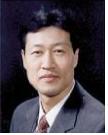#40

THREE GREAT MYSTERIES WITH A PURPOSE
This is history’s greatest mystery—God entered the world as a baby whose peasant mother was a virgin, engaged to an honor-able young Jew. This unparalleled event—God in human flesh— was prophesied by Isaiah 700 years before it happened: The virgin will be with child and will give birth to a son, and will call him Immanuel, which means God with us – Isaiah 7:14.
How will this be since I am a virgin? was Mary’s shock-and-awe question to Gab- riel after announcing she would give birth to a son. The angel explained, The Holy Spirit will come upon you, and the power of the Most High will overshadow you – Luke 1:30-35. Later, Mary and Joseph traveled to Bethlehem to be registered. While there, Mary gave birth. From the East, Magi came with their gifts. The record rapidly moves on to Jesus and his Twelve, teaching, miracles, crowds, opposition, crucifixion, resurrection, and ascension with a promised return.
Suddenly, 20 centuries later it’s Christmas again.. We followers of Jesus continue to celebrate his birth—the Incarnation, God in human flesh. I am writing this a week before Christmas 2008. It so happens the 60-voice National Lutheran Choir is in Minneapolis tonight to give a Christmas concert with a timely title: LOVE INCARNATE—God was in Christ, reconciling the world to himself – II Cor. 5:19.
While we who follow Jesus celebrate this one-of-a-kind mystery, our culture gets its jollies from its secular/material “Season,” having hijacked the Jesus event, and down-sized humanity’s greatest miracle to a Santa-type myth. Actually, Jesus’ followers more than “double the pleasure, double fun” of Christmas by giving pri-ority to Jesus and celebrating with all kinds of people – family gatherings, cards, decorations, gifts, lights, parties, Jingle Bells music, special food and more.
The purpose of revealing this mystery is so all nations know that God in Christ so loved the world (and continues to love it) that he died to save us from our sins.●
COMMENTS
in relation to Mystery # 2: The Incarnation, THREE GREAT MYSTERIES WITH A PURPOSE
 Linda Grandia, USA, wrote
Linda Grandia, USA, wrote
Caregiver or Curegiver: One Day Service! One Hour File Developing! Drive thru Fast food! That is the pace our society is accustomed to.
One day service will have our care repaired and ready to travel again. There is no need to wait two to three weeks to enjoy photos after mailing a film in, and hunger can be fixed by a quick drive thru Hardness.
At our recent Care Ministry seminar, Jane Brown, lay care ministry director at Meredith Drive Reformed Church, shared with us a message of encouragement concerning the Caregiver verses the Curegiver. The thought I share with you now are derived from her message and/or the book, “Christian Caregiving, a Way of Life” by Kenneth C. Haugk.
We, as caregiver, must not expect to “fix” the problems of those for whom we care with drive-true, one hour, or one day speed. In fact, we must realize it is not our responsibility to “fix” anything no matter no matter how badly we want to. Our job is simply to care, to plant a seed, to be concerned, AND to bring that concern to God.
CHRISTIANS ARE RESPONSIBLE FOR CARE: GOD IS RESPONSIBLE FOR CURE
Realizing that God is the curegiver, we are freed from worry and false expectations. Demands on both ourselves and the care receiver are diminished. Instead, time and energy can be spent developing trust and communicating acceptance and love.
Trusting God to provide results means freedom for us, yet not license to stop caring.
Ceasing to worry about results does not entitle us to provide careless care. We plant the seed, God provides the growth. Leave the one day service to Mr. Goodwrence, and the curegiving to God. Realizing that God is the curegiver, we are freer to accept the responsibility to care.
By Linda Grandia, Lay Shepherd
Third Reformed Church Pella, Iowa.

Byeong, Melvin University, says:
Jesus became flesh, human being, and how do you think and where to find in your life?
How to use Melvin’s materials: I am grateful to Dr. Melvin that he developed very useful resources, but I had regretted we couldn’t use them fully. He has done what he has to do, so the rest are upon to us.
First, he wrote two text books: 1) Can the Pastor Do It Alone? 2) Lay Driven Church: and four manuals; Startup Manuals, Training Manual, Supporting Paper, Leader’s Manual: and three re-equipping materials; Monograph, Dynamite Meetings, and Essay. Recently he developed about 30 Letters to Lay Pastors. I and others tried to develop additional materials but mostly based on Dr. Melvin’s concept and philosophy, and also on his ministry.
Let me talk about the first book. He has been started this ministry at CHPC (College Hill Presbyterian Church, Ohio, USA), there he made outline of the book because he has written from what he has learned from the actual field experience, then he has written Doming dissertation at UTS (United Theological Seminary, Ohio), later on his dissertation changed into the book, Can The Pastor Do It Alone? And it has been published in public. Then it translated into many languages, even in Korean from LPM Korea Institute.
Actually it has written for lay people because it says how lay people are doing PACE as a lay pastor. And it contains a lot of illustrations which is from other churches, and other people, their stories on the ministry. It is really helpful for lay people to understand how they were, and how they are doing in the near future. It has been used 35 years in the States and 15 years in Korean and now in the PACE International Seminary (PIS), Nagaland India.
His second book is Lay Driven Church which is more theoretically and academically. After many years in Lay Pastors Ministry/PACE ministry itself, Dr. Melvin needed book of more on theory for senior pastor those who lead this ministry. The first book is for lay people so the leader, mostly senior pastor, need to see two books at same time. They are leader of the ministry, so need to know not only practical aspect but also theoretical aspect, and more deepen knowledge for the ministry.
The four manuals: 1) Start-Up Manual; 2) Training Manual; 3) Supporting Paper; 4) Leader’s Manual. We need to look at the manual of start-up. Before this ministry, pastors have to read it, and they know how to start. It is essential to read it. If they don’t know the process from 1 to 10, they are not sure about the process, so they might embarrassed very soon, so read and familiar with that process. Training Manual derived from the first book, but more structured, so need to look at from module 1 to 12. If he trains with this manual directly it’s wonderful, but only a few pastors trained by themselves out of 200 churches in Korea. Mostly they requested to the Headquarter, LPM Korea Institute, so I go to their church and train their lay pastors, even though I visit there, senior pastor would better to know what’s in the Training Manual before the training session.
And there is Leader’s Manual. This is more pages (80 pages) than Training Manual itself (34 pages). This Leader’s Manual is really helpful to the trainer themselves, and we LPM Korea have translated those materials into Korean and used them very well. I have read Leader’s Manual many times in Korean and also even English version. There are many flesh and bloods for doing and leading the ministry, so Dr. Melvin made them very well.
Also he wrote three re-equipping materials: Monograph; Dynamite Meetings; Essay. Monograph is good for beginning stage, I mean first 6 months, and they would better use it at re-equipping session. Many honeymoon of the ministry is over in a few weeks, or in a few months or so, they need to re-chargeable battery, this reequipping is that battery, and time to time, need to use Dynamite Meetings for reequipping at monthly meetings and can read Essay at home or group meeting, and discuss each other. Lastly he wrote Letters to Lay Pastors. We may find that this looks like very personal Letter. Once I have read them, I opened my mind and eyes again.
Also I suggest that you to read Network News that published quarterly which has done last thirty years. Mostly Dr. Melvin wrote many and all of stories in the ministry field and his experiences, his insights, so we will get a lot of Ideas for our own ministry, I am still reading and reading, and using them.■
ADDITIONAL COMMENT
by BYEONG
DWYS,YWD: The title of today’s article is in English, which means, “What you said you would do.” [Do What You Said You Will Do]. Of course, I always remind myself of the seven letters of the title to make it easier to memorize. I still find it very beneficial to me. I saw this word and its concept many years ago, and it is still vivid and trying to apply it to my life. The promise we said is to keep. There are often cases where promises are overstated unconditionally, and group leaders are considered to be careful in small groups in the church.
Of course, this phrase is very inevitable in the pastoral care of laypeople, and what they promised should be kept. I found that there are several characteristics of people’s failure to keep their promises. 1) It is a case that some people have become accustomed to not keeping their promises. These people do it more often than others, but they may do it unconsciously. 2) Some people are very busy and don’t take appointments seriously. 3) Some people use one excuse or another too often, like lip service.
It is important to keep your word, but it is often easy to neglect. It’s a big mistake. If we can’t meet them on time, or if we can’t keep their promise, we should be informed in advance. For example, if you say, “See you next time,” wouldn’t the other person wait? That’s why Reverend Melvin emphasized this in the P.A.C.E. training manual as well. This is an important factor in the ‘qualities’ of caregivers, so it is not a problem that can be solved by lip service.
This is actually directly related to reliability. If we don’t keep our time commitments, it will hurt our credibility, which is very basic in starting and continuing with each other’s relationships, so they may not trust us from the start.
I have an experience myself: I was supposed to meet someone the other day, but he said he would come soon, so I waited on the street for hours at night. I’m sure he knows I’m waiting, but he called me a few hours later and went straight home for one reason or another. It was a calling to me when he went home. Listen, I understand his situation, but I’m very unpleasant and angry. I thought about how much it would be nice if he called me in advance. Of course, it is true from a third party later, it is his habitual. The credibility is flawed.
And the other is that we may often make mistakes, saying “I’ll pray for you!” too easily, too often. As believers, we often say this consciously and unconsciously, but how much do they believe that we really pray for them? Of course, we mostly pray for them, but if we don’t actually pray for them as we say, it’s futile and just ends in ‘lip service’. I mean, we should definitely use these even little things consciously.
In conclusion, there is something I realized that although we make promises to people, in fact, we also make promises to God. He knows what we say, what we do, what we don’t do. Let’s remind that it’s also a promise to God.

뒷문을 다시 열라
미국 교회에는 돌봄에 대한 중요한 두가지 사역 패러다임이 있다. 스데반사역과 평신도목회이다. (Stephen Ministry any Lay Pastors Ministry). 대부분의 미국 교회는 이 중 하나를 채택하거나, 어떤 교회는 두 사역을 동시에 함께 가지고 있는 교회도 있다. 물론 개 교회별로 개발한 사역들도 있지만 (Caring Church, TLC, so on) 전반적인 미국교회를 말할 때 이 두가지로 대표할 수 있을 것이다.
스데반 사역의 교과서는 “뒷문을 다시 열라”(Kenneth Haugk, 스데반 사역 설립자)이다. 케넷호크 목사는 심리학자로서 목회하면서, “왜 사람들이 소극적이고 피동적이 돼버릴까?”로 고민하기 시작했다. 나는 이 책을 한국어로 번역해서 우리 세미나 시에, 여러 번 사용했다. 그 사역의 특징은 현재 ‘위기에 처한 사람들을 돌보는 것’에 초점을 맞춘, 아주 훌륭한 훈련교재를 개발한 것이다.
그것은 일종의 위기관리 사역이다. 훈련 매뉴얼에는 왜 사람들이 수년간 다니던 교회를 떠나는지를 보여주는데 33가지 이유가 있다고 했다. 그것은 그런 사람들을 이해하는 데 유용한 자료이다. 그중에 주된 이유는 1) 서로 좋은 관계 부족, 2) 교회가 무의미, 3) 소속에 대한 굶주림 등이었다. 그것은 일대일의 돌봄을 통해서만 가능하기에 일대일에 대한 이해가 필요하다고 했다. 사람마다 각기 다른(33가지) 이유가 있으니 그럴 수밖에 없다는 것이다. 어쨋든 그러다가 그들이 교회를 떠나니, 저자는 돌봄 사역을 통해 책을 썼는데, 예를 들어, 교회를 떠난 사람들이 다시 돌아올 수 있도록 해야 한다는 강조였다. 그래서 “뒷문을 다시 열라”라는 제목을 붙였다. 이 자료가 기여한 것은, 무조건 교회에서 피동적이 된 사람들, 그리고 떠난 사람들을 비난하면서 걷어차서(?) 내보내면서 뒷문을 확 닫아버리기보다는, 왜 그들이 피동적이 되었는지, 왜 교회를 떠났는지를 이해하게끔 해주는 데 있다.
통계에 따르면, 미국의 약 40%되는 교인들이 정기적으로 교회에 참석하지 않고 있으며, 이는 그들이 소극인 사람들 (inactive)이라는 것을 의미한다. 물론 미국뿐만 아니라 세계 대부분 교회도 같은 문제를 안고 있고, 여기 케냐의 교회들도 같은 문제를 갖고 있다. 심지어 우리 대학교회(university church)에서도 마찬가지 현상이 있다. 그래서 그들이 곧 교회를 떠날 준비가 되어 있기 때문에 그 사람들에게 더 관심을 둬야 한다는 것이다. 그런데 사실 대부분의 교회가 사람들이 교회를 떠날 때 너무 일찍 뒷문을 닫아버리고 있다. 우리는 그렇게 해서는 안된다며 늘 뒷문을 다시 열어놓고 생각할 시간과 여지를 주라는 것이다.
추가로 또 다른 책은 “뒷문을 닫아라(Closing the back door)”는 것으로, 오래 전 명성훈 목사님께서 쓰신 것으로 기억한다. 교회를 떠날 것 같은 사람들에게 떠나지 못하도록 뒷문을 닫아야 한다는 것이다.
나는 이 두 권을 함께 보면서 매우 흥미를 느꼈다. 하나는 떠날 사람들에 초점을 맞추었고(“뒷문을 닫으라”), 다른 하나는 방금 떠난 사람들에 초점을 맞추고 있었다(“뒷문을 다시 열라”). 멜빈목사님의 평신도목회는 교회안에 소외된 사람들을 돌보는 것에서 출발했지만, 방금 교회를 떠난 사람들까지 양쪽을 다 돌봐야 한다는 두 가지 개념이 모두 다 강조되어 있어서, 교회에 적용시켰을 때 목회자와 성도들이 다 필요하다며 공감을 해주기도 했다.●
